Concept of Classification
Explain the concept of classification
Have you ever visited a library? How are the books arrangedand kept? Are they arranged randomly or systematically? Obviously the books are arranged systematically in the shelves. Science books are kept separately in their respective shelves. Science books are keptseparately from social or commercial books. Biology books are separated from physics books or chemistry books. Likewise, in the shop, laboratory or pharmacy items are sorted and placed on the basis of their similarities.
In the world, there are numerous varieties of living organisms.These organisms do vary in size, structure, shape, habitat, modeof feeding and even mode of reproduction. The organisms can be sorted out and placed into different groups based on their similarities. The system of sorting out and placing organisms into different groups on the basis of their similarities and differences is called classification.
Living Things According to Their Similarities and Differences
Group living things according to their similarities and differences
Activity 1
Study the external features of the following organisms:Lizard, sugar cane plant, maize plant, shark, Tilapia, cactusplant, bat, cockroach, butterfly, hen, goat, toad, frog, spider andorange plant
Activity 2
Classification makes the study of living things easy
Classification makes communication easy among biologists from different parts of the world
It provides good organized system in which a newly identified organism can be easily fitted in future.
It makes it easier to identify organisms
It can be used to predict characteristics that are present in the members of the same group.
- Artificial classification
- Natural classification
Artificial classification
An artificial classification is based on one or a few
easilyobservable characteristics and usually designed for
practicalpurpose with an emphasis on convenience and simplicity. In
thistype of classification, unrelated organisms are often placed inthe
same group while closely related organisms are often placedin different
groups.Linnaeus included all
included wide a range of animals as fromnematodes, earthworms to snakes.
This was an artificialclassification since it did not consider natural
relationships suchas the fact that snakes have backbones and earthworms
do nothave. Thus, snakes have more features in common withvertebrates
than with worms.
to fly since they posses wings. But bats sharemany features with
mammals. They have features like hair,mammary glands, sweat glands and
different types of teethwhich are characteristics of mammals. Therefore,
bats are morerelated to mammals than birds.Natural
Natural system of classification
natural relationshipsbetween organisms. It considers many features in
commonincluding internal as well as external features.Similarity of
embryology, morphology, anatomy, biochemistrycell, structure and
behaviour are all considered relevant. It isbased on evolutionary
relationship in which organismsbelonging to the same group are believed
to have a commonancestor.
Characteristic features which show homology are distinguishedfrom those which show
analogy. Example the fore limbs ofmammals, whales, birds and bats have
the same basic patternand similar bone arrangement, i.e. homologous.
This suggeststhat these organisms are coming from the same ancestor and
thatcan be placed in the same group.
Advantages of artificial system of classification
It is easy to classify organisms since it is based on few observable characteristics.
It does not take much time to classify organisms based on this system (not time consuming).
It does not need expertise (even a layman can do).
It is relatively stable i.e. not easily changing from time to time.
It
tends to place closely related organisms into different groups instead
of being grouped together e.g. a bat can be placed in a group of birds
instead of mammals.
Different or unrelated organisms may be
placed in the same group e.g. bats placed in a group of birds, worms
placed with snakes in the same group
The system does not provide enough information about its members.
It is difficult to incorporate additional information.
| Artificial classification | Natural classification |
| (i) Considers few features in common | Considers many features in common |
| (ii) Does not reflect on evolutionary relationships | Reflects on evolutionary relationships |
| (iii) It is easy to classify | It is difficult to classify |
| (iv) Not time consuming | It is time consuming |
| (v) Does not require expertise | Requires expertise |
| (vi) New information cannot be added | New information can be added. |
Practical Activities of Classifying Living Things According to Artificial and Natural Classification Systems
Carry out practical activities of classifying living things according to artificial and natural classification systems
the under named organisms and keenly examine their external and
internal features:Bat, grasshopper, rat, earthworm, fish, ascaris,
cockroach, lizard, hen, hawk, and toad.
Activity 5
Classify the organisms using natural classification systems.
Major Groups of Living Things
things were categorized into two main groups; plantae and animalia
kingdom. But this classification caused difficulties since some
organisms seemed to posses some of the characteristics of both groups.
For example, euglena is capable of feeding like an animal and locomote
like an animal. Therefore, it is placed in animalia kingdom. But the
same euglena has chlorophyll and it is capable of manufacturing its own
food. Therefore, it should also be placed in plantae kingdom. Such an
organism does not seem to fit exactly in animalia or plantae kingdom.
Thus, euglenas are assigned in the major group of their own.
Ranks of Classification
Outline ranks of classification
In the millions of organisms found on earth some are more similar while
others are less similar. For example, all human beings resemble each
other more closely than they resemble with the chimpanzees. Humans have
more resemblance with chimpanzee than cats and dogs, and more like dogs
than birds.Therefore when classifying the organisms, groups are
established which are called ranks or taxa.
- Kingdom
- Phylum/division
- Class
- Order
- Family
- Genus
- Species
Kingdom– this is the highest rank (taxon). It comprises of several related taxa. It comprises of many organisms than any other taxon.
Phylum/division– this is the second largest rank of classification. It consists of several closely related classes.
Class – members or this group have more characteristics in common than do members of division or phylum.
Order– it consists of groups that are more alike than those in a class.
Family –this is made up of groups that are more alike than those in the order. Wolves and cats are both in the order Carnivore but wolves are in the family Canidae while cats belong to the family Felidae.
Genus – it consists of very similar species but members of different species cannot breed one another.
Species
– Species can be defined as a group of closely related organisms which
are capable of interbreeding and produce fertile offspring.
be placed in the same species must have the following characteristics:
- Must have many features in common.
- Must be able to breed one another to produce fertile offspring.
- Must be distinct and different from other organisms.
| Human | Leopard | Domestic cat | |
| Kingdom | Animalia | Animalia | Animalia |
| Phylum | Chordata | Chordata | Chordata |
| Class | Mammalia | Mammalia | Mammalia |
| Order | Primates | Carnivore | Carnivore |
| Family | Hominidae | Felidae | Felidae |
| Genus | Homo | Panthera | Felis |
| Species | sapiens | padus | catus |
Scientific naming of living organisms
The
scientific process of naming organisms is called nomen- clature.
Biological nomenclature is based on the binomial system (double naming
system) pioneered by the work of a Swedish naturalist Carl Linnaeus
(1707-1778).
assign scientific names to organisms so as to avoid confusion among
themselves since scientists from different countries use different
languages. The scientific names are uniform in all languages.
Latin
language is used in assigning the scientific name because it is an
official language and that this language is no longer subject to
changes; it is considered to be a dead language hence names once given
remain unchanged.
Rules of binomial nomenclature
Scientific names of organisms must be in Latin language and if the names are derived from other languages, they must be latinized.
A scientific name of an organism has two parts, genus name and species name.
A genus name always starts with a capital letter and a species name follows with a small letter.
In typed scripts, a scientific name must be written in italics or underlined if hand written.
A specific name is sometimes accompanied with the name of the author who first described and named the organism.
When an organism is known by several names, the valid name is the one which was established after the work of Linnaeus.
Example 1
Other examples of organisms with their scientific names
| Common name | Scientific name | |
| Earthworm | Lumbricus | terrestris |
| Cockroach | Periplaneta | americana |
| Amoeba | Amoeba | proteus |
| Coffee | Coffea | arabica |
| Maize | Zea | mays |
| Bean | Phaseolus | vulgaris |
| Domestic cat | Felis | catus |
| Sisal | Agave | sisalana |
| Ashok tree | Polyanthia | longifolia |
| Housefly | Musca | domestica |
| Neem tree | Azadirachta | indica |
| Flamboyant (Christmas tree) | Delonix | regia |
| Tropical almond (mkungu) | Terminalia | catapa |
Viruses
were discovered by a Russian botanist D. I. Ivanovsky and a Dutchman
Beijerink.In 1852 Ivanovsky prepared an infectious extract from tobacco
plants that were suffering from mosaic disease. When the extract was
passed through a filter able to prevent the passage of bacteria, the
filtered fluid was still infectious. 1898 Beijerink gave the name
“virus” (in latin means, “poison”) to describe the infectious nature of
certain filtered plant fluids.
They are the smallest living organisms ranging from 20-30nm. On average, they are about 50times smaller than bacteria.
Viruses
do not have cellular structures, which mean that they lack certain
important organelles like nucleus, cytoplasm, golgi bodies, etc.
They can only reproduce inside the living cells hence they are parasitic.
They have a simple structure consisting of either DNA or RNA but not both, surrounded by a protein or lipoprotein coat.
They can be described as living or non-living.
They are highly specific to their hosts i.e. each virus recognizes only certain types of cells.
Viruses are capable of replicating themselves only when they are inside the host cell.
They possess genetic material (RNA or DNA).
They reproduce when they are in the host cell (replication).
They are capable of identifying their hosts and attack them.
They can undergo mutation (they mutate) i.e. they undergo different changes in shape.
Like other parasites, they are specific to host.
They can crystallize outside the host.
They are metabolically inert in isolation.
They are non-cellular i.e. they lack cell organelles.
They do not perform necessary life processes such as respiration, excretion nutrition etc.
RNA or DNA which may be single stranded or double stranded. They form a structure called core.
A protective coat of protein surrounding the core called capsid.
A nucleocapsid which is a combined structure of core and capsid.
Envelope – an additional layer of lipoprotein layer around the capsid.
Capsids are made up of identical repeating units known as capsomeres.
Viruses
are used in developing vaccines, for example, vaccines for measles,
polio and rubella are made from viruses that have been attenuated
(weakened).
Viruses are used as biological weapons to kill organisms.
They
are used as vectors in genetic engineering to transfer genes from one
organism to another for improving or treating the defective genes.
Bacteriophages are viruses that attack bacteria and hence they help in controlling infections and diseases.
Viruses are used as biological weapons in wars and in biological pest control.
Most
viruses cause diseases to both plants and animals. Plant disease such
tomato mosaic, cassava mosaic and tobacco mosaic; and animal diseases
e.g. measles, small pox, poliomyelitis and yellow fever are caused by
viruses.
This
kingdom is made up of organisms known as bacteria (singular:
bacterium). They are the most ancient and smallest organisms with a
cellular structure. They are mainly single celled. Bacteria occupy many
environments such as soil, dust, water and in the bodies of plants and
animals
bacteria are found in hot springs where temperatures are 78ºC or more.
Others can withstand very low temperatures. Some are found in very deep
cracks in the ocean floor, at very high temperatures, about 360ºC
(extreme thermophiles).
General and Distinctive Features of the Kingdom Monera
Explain general and distinctive features of the kingdom monera
They are mainly unicellular and very small.
They are all prokaryotic (nucleus not bound by membrane)
They reproduce by binary fission.
Some members of the kingdom are autotrophs while others are heterotrophs
They have cell wall made up of protein material and sometimes lipids.
Some
bacteria form spores during adverse conditions i.e. extreme conditions
e.g. high or low temperatures, drought etc. The spores allow them to
survive as they have very thick resistant walls.
Some are aerobes while others are anaerobes.
The
genetic material (DNA) is scattered in the cytoplasm and they lack
internal membrane bound organelles such as mitochondria, chloroplasts,
golgi bodies etc.
Bacteria
have strong and rigid cell walls due to the presence of murein. The
wall prevents the cell from bursting when it absorbs much water (as a
result of osmosis).
Bacterial cells are bounded by partially permeable membranes.
Bacteria
possess capsules which are slimy or gummy.They have flagella which aid
motility of the bacteria. Motile bacteria can move in response to a
certain stimulus i.e. tactic movement. Flagella can easily be seen by
electron microscope.
They have small self replicating circle of extra DNA called a plasmid.
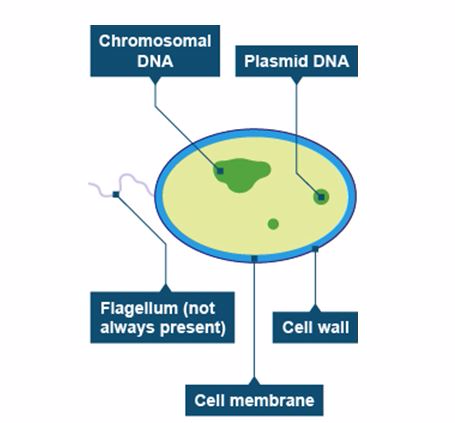
- Micrococcus – exist singly. They cause sore throat.
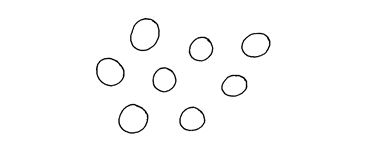
- Diplococci – this type of bacteria exist in pairs. The pneumococci (Diplococcus pneumoniae) are the only members. They cause pneumonia.

- Streptococci
– this type of bacteria stick together and form a chain. Most of them
infect upper respiratory surface and cause diseases e.g. sore throat.

- Staphylococci – These bacteria form a grape like bunch. They cause boils, pneumonia, food poisoning and other diseases.
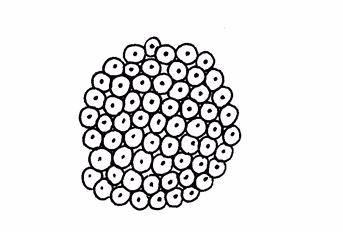
- Single rods, for example, Escherichia coli commonly living in the gut and Salmonella typhi which cause typhoid fever.
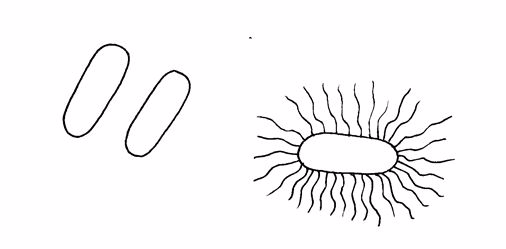
- Rods in chain, for example, Azotobacter, a nitrogen-fixing bacteria, and Bacillus anthracis which cause the disease anthrax.

- Bacilli with endospores showing various positions, shapes and sizes of spores. They can be:
- Central, not swollen e.g. Bacillus anthracis causes anthrax
- Spherical spore, terminal swollen e.g. Clostridium tetani causes tetanus
- Sub-terminal, swollen e.g. Clostridium botulism causes botulism.Spores may also be central
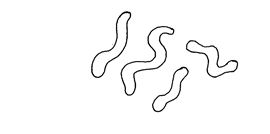
Economic Importance of Bacteria
Nitrogen fixation:Plants
cannot trap nitrogen from the atmosphere but bacteria can fix nitrogen
and change it into nitrogenous compounds. The phenomenon is called
nitrogen fixation. The bacteria, which fix atmospheric nitrogen, are
called nitrogen-fixing bacteria. Some of the nitrogen fixing bacteria
are found freely in soil are called free-living bacteria, eg.
Clostridium and Azotobacter. Some of them are found in root nodules
making association with leguminous plants called symbiotic bacteria, eg.
Rhizobium.
Nitrification:Some bacteria convert
ammonium compounds into nitrates in the soil. The process is called
nitrification. The bacteria that take part in this process are called
nitrifying bacteria, eg. Nitrobacter and Nitrosomonas. Nitrosomonas
NitrobacterAmmonia—————>Nitrites————->Nitrates
Ammonification:Some
bacteria utilize proteins of dead bodies and convert it into amino
acids. These amino acids are converted into ammonia by some bacteria.
The process is called ammonification and the bacteria involve in the
process are called ammonifying bacteria. Then the ammonia reacts with
CO2 and H2O and gives ammonium carbonate which is absorbed by plants.
Bacteria decompose dead bodies. They convert complex organic compounds into simple inorganic compounds. Therefore they’re called natural scavengers.
Bacteria make the milk sour and produce flavor. They are responsible for coagulation of milk. E.g. Lacto bacillus.
Bacteria convert sugary substances into alcohol, acids, acetones; etc the process is called fermentation.
Bacteria also help to produce different types of enzymes like Amylase secreted from Bacillus, Protease from Bacillus, Streptokinase from Streptomyces.
Bacteria are useful for vitamin production like Vitamin B (Cabalmin) is secreted from Pseudomonas, Vitamin B (Riboflavin) is secreted from Clostridium.
They are important for antibiotic production like Terramycin from Streptomyces rimosus, Streptomycin from S. griseus, Neomycin from S. fradiae.
They are also important to produce hydrogen commercially. During the process they ferment carbohydrate and hydrogen gas is produced.
Bacteria decompose waste products.
Disadvantage of Bacteria
Some of the species cause food poisoning. They secret some toxic chemical
substances on out food stuff which cause food poisoning, eg
Staphylococcus and Clostridium.
Some are responsible for human
diseases: Cholera: Vibrio cholera, Pneumonia: Staphylococcus pneumoniae,
Diarrohea: Escherechia coli, Tuberclosis: Mycobacterium tuberclosis
Leprosy: M. leprae, Meningitis: Nisseria meningitides.
Some bacteria are responsible for plant diseases. Red stripe in sugarcane,
Leaf streak in rice, black rot in cabbage and yellow rot in wheat are
caused by Xanthomonas and Pseudomonas.
The Characteristics of Pathogenic and Non-pathogenic Bacteria
Outline the characteristics of pathogenic and non-pathogenic bacteria
Although
most bacteria are harmless or often beneficial, several are pathogenic.
One of the bacterial diseases with the highest disease burden is
tuberculosis, caused by the bacteriumMycobacterium tuberculosis,
which kills about 2 million people a year, mostly in sub-Saharan
Africa. Pathogenic bacteria contribute to other globally important
diseases, such as pneumonia, which can be caused by bacteria such asStreptococcusandPseudomonas, and foodborne illnesses, which can be caused by bacteria such asShigella,Campylobacter, andSalmonella.
Pathogenic bacteria also cause infections such as tetanus, typhoid
fever,diphtheria,syphilis, and leprosy. Pathogenic bacteria are also the
cause of high infant mortality rates in developing countries.
is usually used to describe bacteria.It describes a property of a
bacterium – its ability to cause disease. Most bacteria are
nonpathogenic. It can describe the presence of non-disease causing
bacteria that normally reside on the surface of vertebrates and
invertebrates as commensals. Some nonpathogenic microorganisms are
commensals on and inside the body of animals and are called microbiota.
Some of these same nonpathogenic microorganisms have the potential of
causing disease, or being pathogenic if they enter the body, multiply
and cause symptoms of infection.
Immunocomprised
individuals are especially vulnerable to bacteria that are typically
nonpathogenic but because of a compromised immune system, disease occurs
when these bacteria gain access to the body’s interior. Genes have been
identified that predispose disease and infection with nonpathogenic
bacteria by a small number of persons.Nonpathogenic colistrains normally
found in the gastrointestinal tract have the ability to stimulate the
immune response in humans, though further studies are needed to
determine clinical applications.
Kingdom comprises of unicellular and simple multicellular organisms
whose cells have organized nucleus and membrane bound organelles. It
includes the algae and protozoa.
have chlorophyll hence make their own food through the process of
photosynthesis.Protozoa are heterotrophic taking in ready-made food.
organisms, which are included in this Kingdom are red algae, Brown
algae, Amoeba, Euglena, plasmodium, trypanosome and paramecium.
Most are unicellular eukaryotes
They reproduce by binary fission
Describe structure of amoeba and paramecium
- They are eukaryotes
- Unicellular
- Parasitic
- They move using pseudopodia
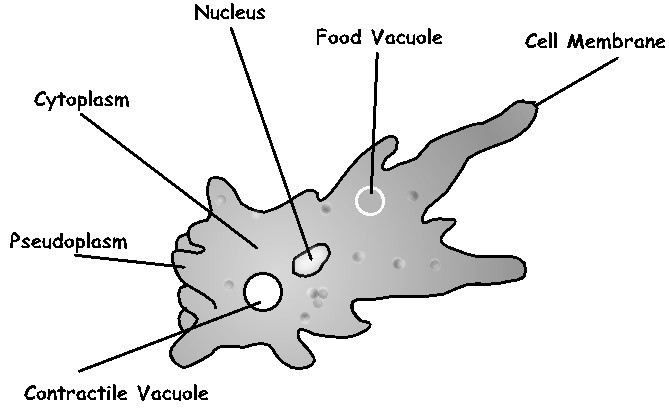
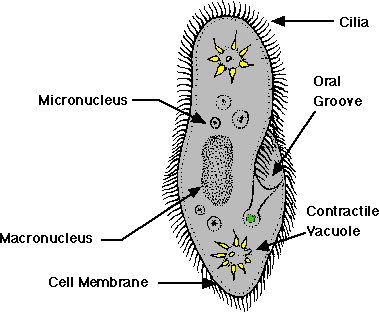
The Advantages and Disadvantages of Amoeba, Euglena Paramecium and Plasmodiu
Explain the advantages and disadvantages of amoeba, euglena paramecium and plasmodium
has two contractile vacuoles and each is associated with permanent
system of collecting channels, which empty, into the main vacuole.
reproduces both asexually and sexually. The asexual method is more
common and it is binary fission. Sexual method is called conjugation.
Movementin paramecium is caused by cilia beating. This movement is called cilliary movement.













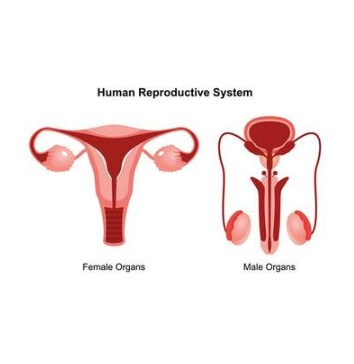
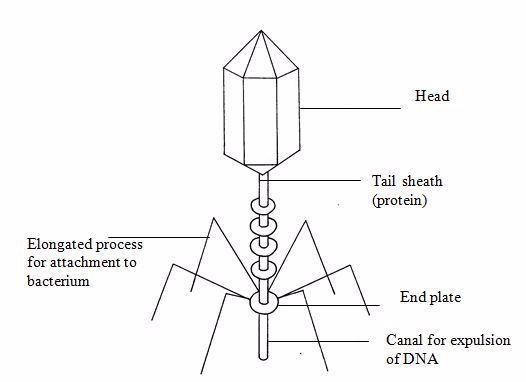
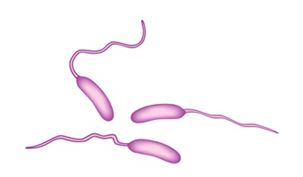





Leave a Reply